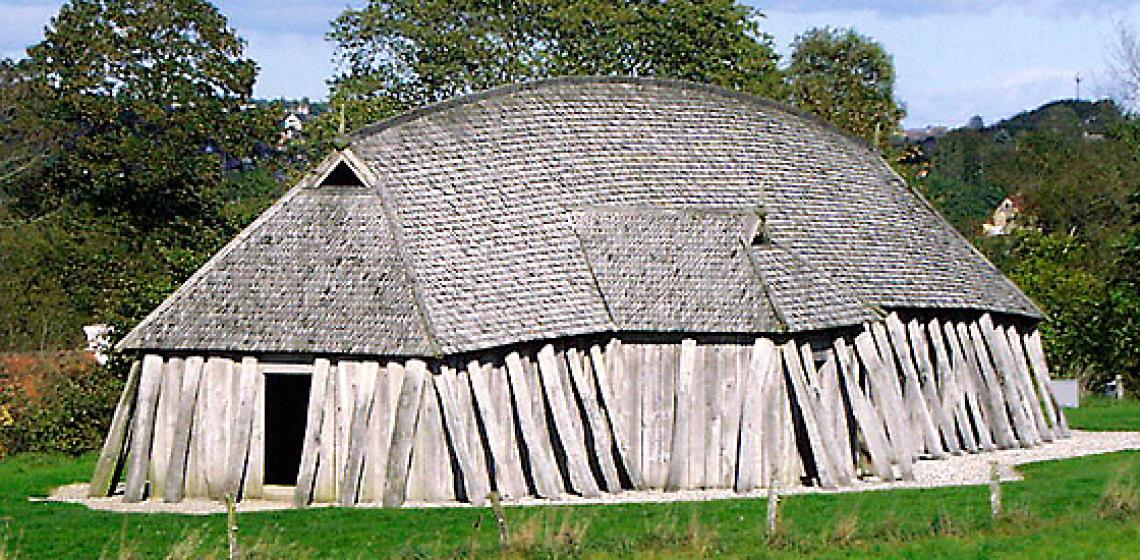Vikingemuseet Fyrkat (DK)

It was already known for a long time that near Hobro in Northern Jutland, Fyrkat was one of the sites where a Viking Age round fortress was situated. The site is strategillay located in a protected bay inside a fjord on the banks of a waterway that facilitated commercial exchange.
In 1985 a reconstruction house was built as a local initiative. When it was ready, it took some years before the same people, now organised in the association “Fyrkathus” planned the construction of a Viking village by means of external funding. This was theTuborg foundation and later the Arbejdsmarkedets Holiday Foundation, like some other tourist attraction archaeological open air museums across Denmark. Because of this funding, the target groups of the centre has been more specified towards families and children.
The 9 houses at the Viking Village are built after excavations at Vorbasse. The idea was to not only show the life of the king’s army but as well the life of farmers in those days. However, the Viking Village was not inhabited by simple farmers, it was one of the largest chieftains’ farms which are documented of that period (980 AD, just like the fortress).
The architect was an archaeologist and also the archaeologists who had been excavating the original houses had been part of the planning team. The present inspector of the museum (since 1995) is an archaeologist and during the season, two more archaeologists or historians are hired to do education, guiding and (crafts) presentation.
The Vikingecenter Fyrkat was founded in 1992 and building continued until 2001. It remained a private institute and visitor centre up until it merged in 2005 into the Sydhimmerlands Museum.
There is no experimental archaeology executed in order to gain new knowledge, but one presents the existing knowledge provided by others. On site, there is no research, registration or publishing.
Goal of the Vikingecenter Fyrkat is to share experience and knowledge with its visitors about the Viking Age by means of all senses. All employees (also those selling tickets or students doing work experience) are dressed in Viking Age like costumes and the fire is always lit in the Viking Village. We think this is a good addition to diffusion of knowledge which usually goes through books, computers et cetera – here one can grab to grasp.
